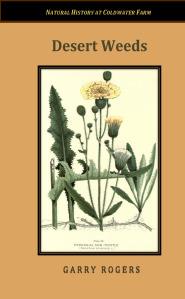 Weeds are those plants that quickly colonize damaged sites and protect the soil while the original plants move back in. Damages from fires, floods, storms, and human impacts (construction, toxic pollution, etc.) threatens soils and the lives of everything and everyone above. As human population and its impacts grow, and as climate change accelerates, weeds become more and more important to wild plants, animals, and people.
Weeds are those plants that quickly colonize damaged sites and protect the soil while the original plants move back in. Damages from fires, floods, storms, and human impacts (construction, toxic pollution, etc.) threatens soils and the lives of everything and everyone above. As human population and its impacts grow, and as climate change accelerates, weeds become more and more important to wild plants, animals, and people.
While serving as our natural first responders, weeds provide other services. They supply food, fiber, and medicine for wildlife and people. As climate change disasters expand, weeds grow more and more important. Without them, the soil would wash away and plants, animals, and people would perish.
Devastating climate change appears to be locked. Even if we stop burning fossil fuels by 2030, the goal of the Green New Deal, we will probably pass critical tipping points and activate further global warming. The worst-case projections leave us unable to afford the cost of disaster recovery and infrastructure maintenance. More than a billion people will be forced to move. By 2049, 30 years from now, some of our great urban centers could be uninhabitable for lack of water, food, and power. This grim possibility would make survival of the fittest the new cultural reality for much of human civilization.
The best-case projections leave our cities functioning but under great pressure as devastating storms and floods reduce agricultural production. Poverty will spread and force many changes as economic systems that have lost their consumers. The refugee crisis will be enormous. There is great danger that fortress nations organized as fascist states will emerge to dominate human civilization. And here’s the point to my story: Outside the cities, weeds will flourish. They will become the foundation for survival of wild animals and people.
A new book underway describes the fundamental nature of weeds, their value as resources, and the steps to take to control their worst tendencies.

